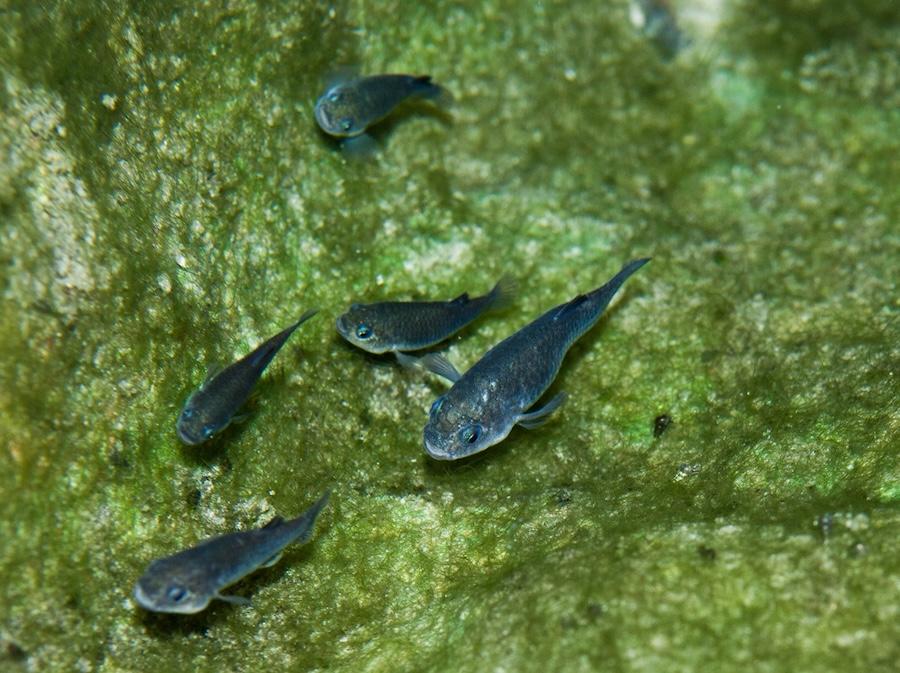
Devils Hole Pupfish / USFWS
On Thursday morning, a magnitude 7.0 earthquake rumbled across the ocean floor about 60 miles off the far Northern California coastline. Just a couple minutes later, energy from the quake had traveled more than 500 miles southeast and shook a pool called Devils Hole in Death Valley National Park, the only home of the endangered Devils Hole pupfish. The seiche waves in the pool reached two feet in height, disturbing settled organic matter in Devils Hole, which, sheltered from wind, is typically plate-glass still.
This is potentially a problem for the pupfish.
Devils Hole is hundreds of feet deep, but the pupfish live only in the upper reaches of the pool, generally not deeper than 80 feet. There are shelves at that depth that collect organic matter the fish eat and where they lay their eggs during spawning.
It appears that the seiche waves scoured the shelves of the organic matter sending it to the bottom of the pool where the fish can't reach it. Many of their eggs were likely swept away too.
“In the short term, this is bad for the pupfish,” said National Park Service biologist Dr. Kevin Wilson. “A lot of pupfish food just sank deeper into the cave, most likely too deep for the fish to get to it. There were likely pupfish eggs on the shelf that were destroyed. But, in the long term, this type of reset is good for the pupfish. It cleaned off any decaying organic matter that could otherwise cause pockets of low oxygen.”

A screen shot of video of waves in Devils Hole in 2022/NPS, Ambre Chaudoin
Waves from earthquakes as far away as Indonesia and Japan can stir the waters of Devils Hole. It's a natural seismometer.
The Devils Hole pupfish is an extraordinary little animal.
They measure less than an inch long and have evolved to live in a strange, inhospitable place. Waters in Devils Hole are hot, about 90 degrees year round. It's also low in oxygen. So the pupfish have a trick. When oxygen levels dip too low, the fish stop breathing, and still go about their business, for several hours at a time.
As recently as 2013, there were only 35 pupfish left in Devils Hole. But, determined conservation efforts, complete with a captive-raised population of the pupfish in a nearby aquarium the US Fish and Wildlife Service uses to bolster the populations of the tiny fish when necessary, have seen the fish's numbers climb to as high as 263 this year.
They've survived seiches before (as recently as 2022, in fact), and they'll likely survive more. They're little fighters, these fish.

 Support Essential Coverage of Essential Places
Support Essential Coverage of Essential Places






